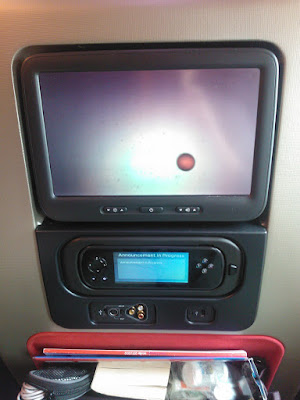Context has two screens


The first time we set up a wireless network in the house wasn't for work purposes. No, it was to use IMDB to work out who the actors were in the film we were watching. And that's been the pattern of computer use in our lounge ever since, keeping a device to hand in order to get extra information around the television.
Of course times change, and our wireless speed has doubled again and again, but at heart it's still that, a companion browsing tool to add contextual information around dumb screen in the middle of the room. Yes, that screen has got smarter too, but there are fundamental differences between its 10 foot user interface and the 3 foot or 1 foot UIs of PCs, Chromebooks, tablets or phones. It's not that the TV can't give us that contextual information, especially now that our TV is unplugged from the broadcast world and has become an IP-connected Xbox, it's that that information is a distraction, and would simply get in the way of the picture.
So what is the future of that companion browsing world? The giant internet-connected TVs at CES just don't work, as much as the TV companies want you to upgrade your perfectly adequate 10-year old screens. It's also perhaps a little too distracting to pick up a phone to lookup Wikipedia, when it's just as easy to play one more game of Angry Birds.
There's one part of the TV experience that could give us what both we and the TV manufacturers want: the remote. It's in our hands, and it does very little. So why shouldn't it have a screen too? Sonos' remotes for its multi-room music service are one pointer to this future. Touch screens, scroll wheels, and plenty of additional information, pulled from the metadata attached to your music. Even Virgin Atlantic's latest flight entertainment system delivers a companion browsing experience, with a touch enabled remote control that gives you details of the film you're watching, or can drop into a map view, letting you see just where in the world you are, without having to flip away from the video on the main screen.
Companion browsing is an important technique we often fail to use. It's built into Microsoft's Xbox Companion application for Windows Phone 7, where a phone becomes a remote, and at the same time drills into information about what you're watching. Bringing this to the television is important – if only to make the stream of hashtags and URLs displayed on our screens by TV programmes both useful and informative. Watching them on a recording, from a PVR, makes them irrelevant and distracting.
And that brings us round to one This information, both ambient and explicit, is contextual, and without an effective set of companion browsing tools it's redundant and pointless. Adding a companion browser lights up the metadata, and gives you information and interactions. When it comes to the big screen in your living room, context has two screens.
Simon Bisson
